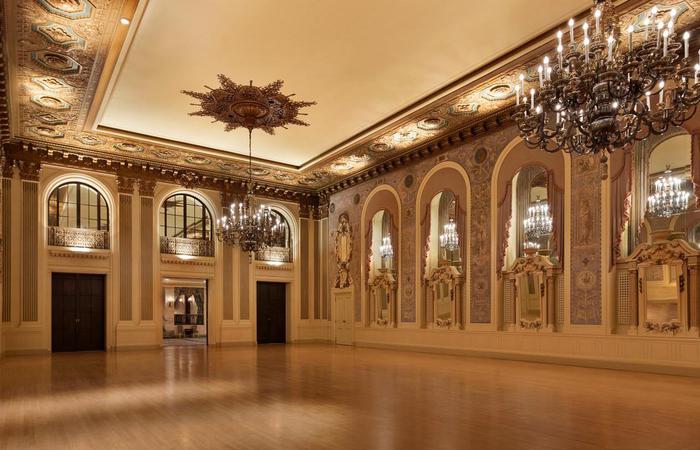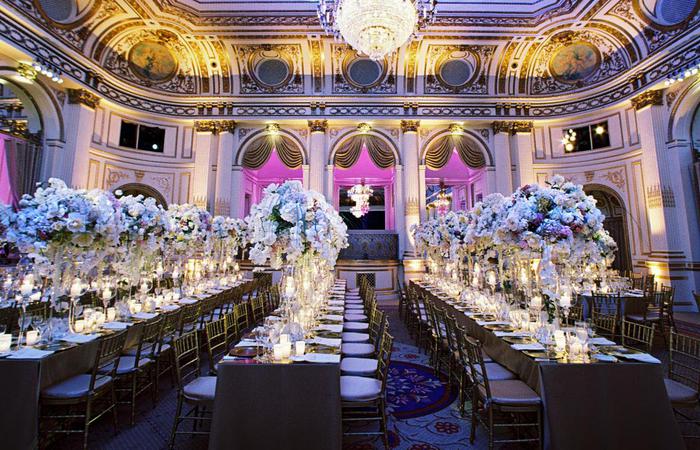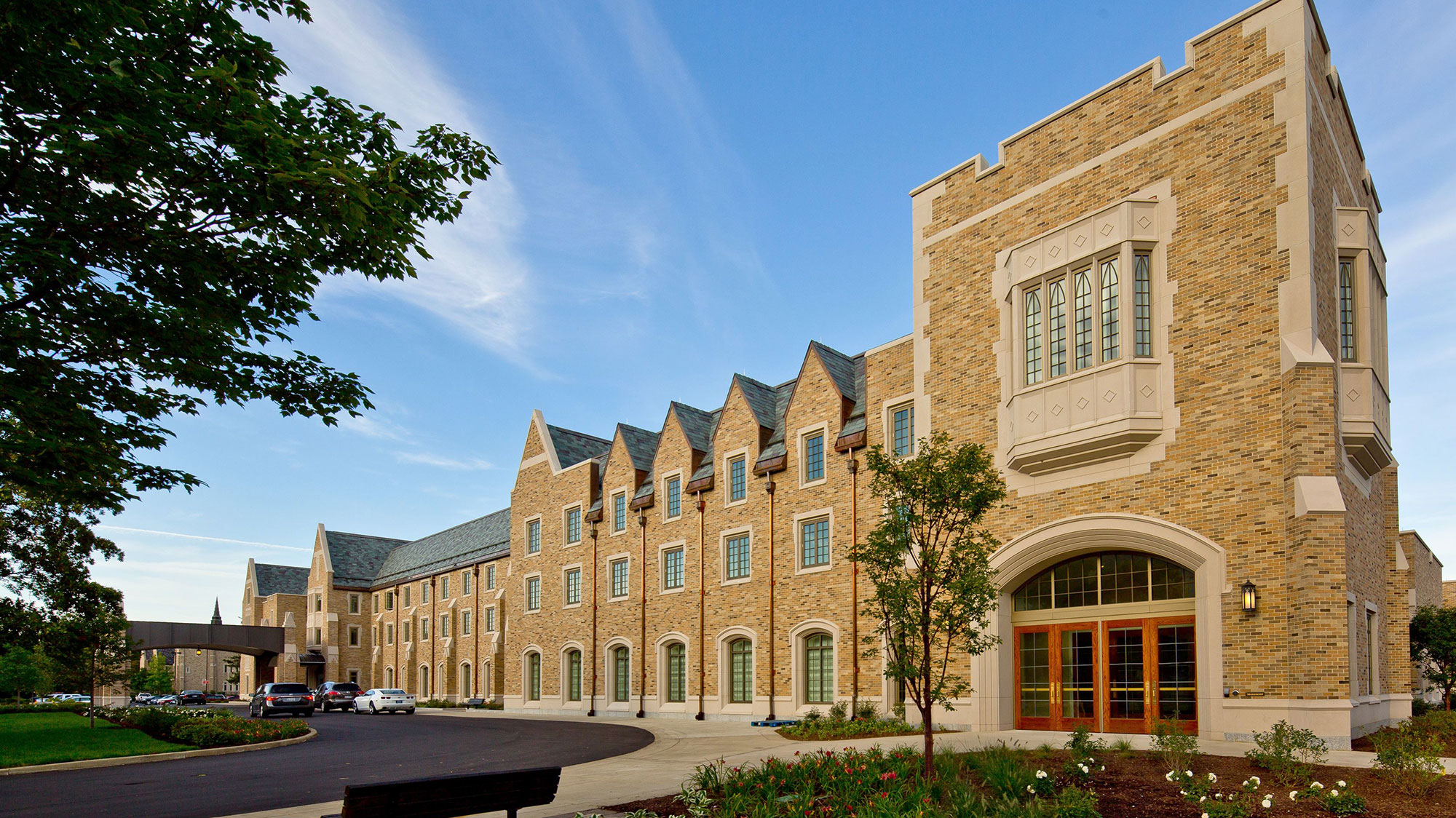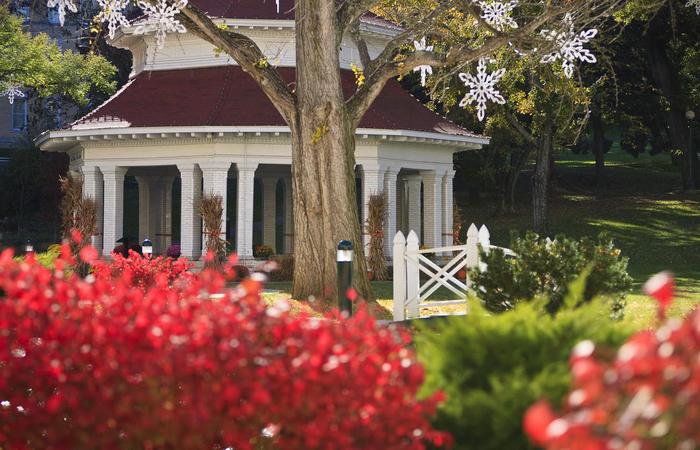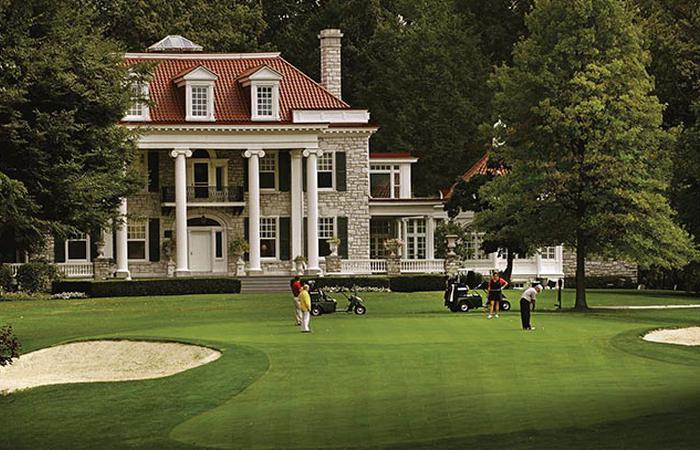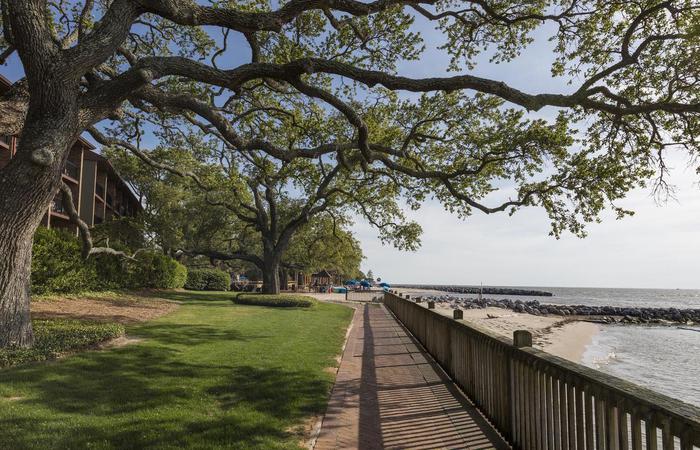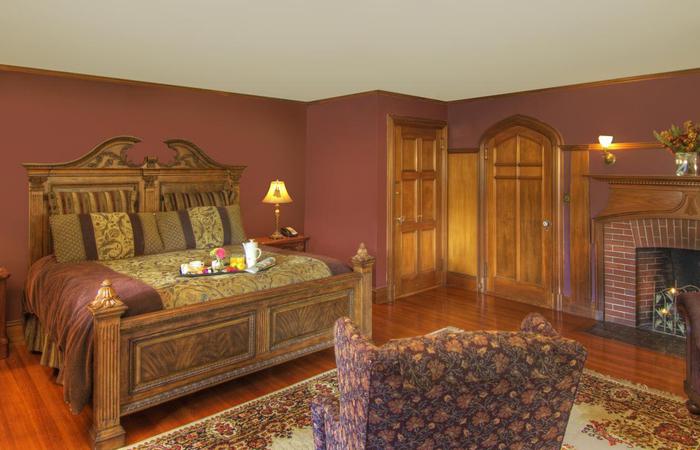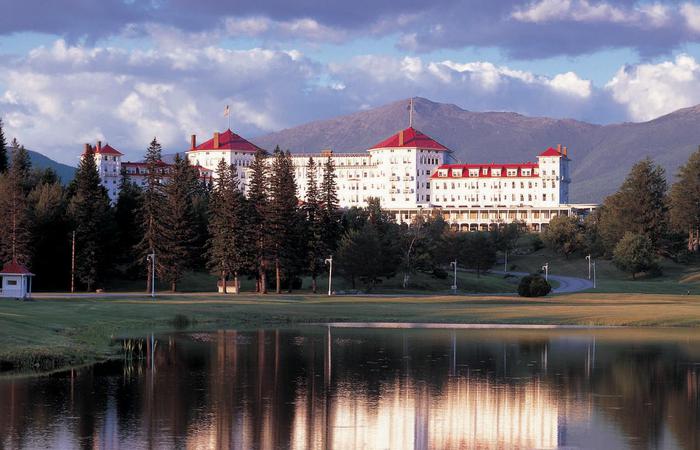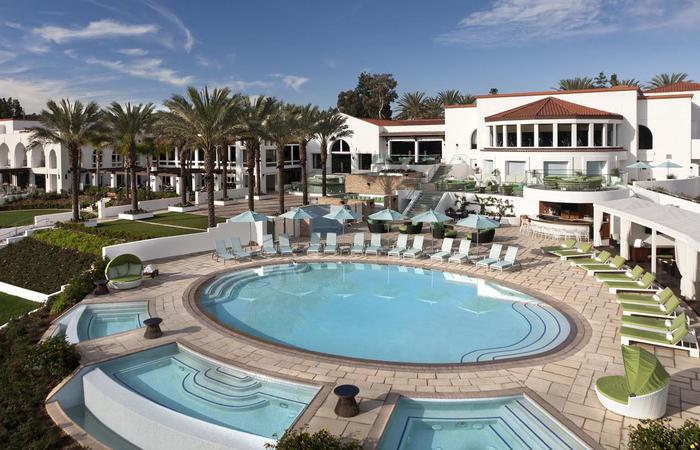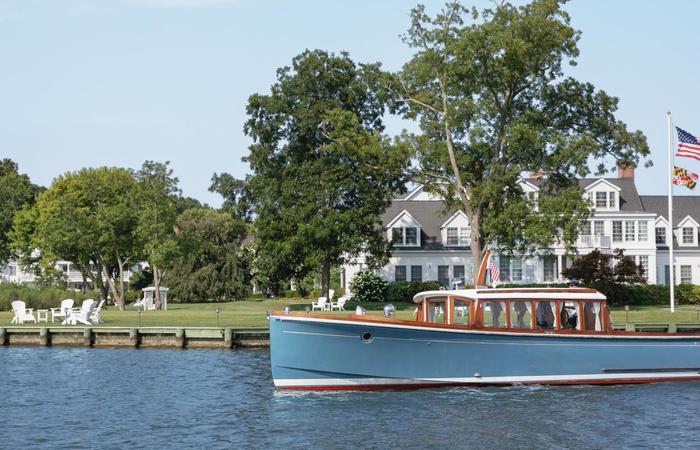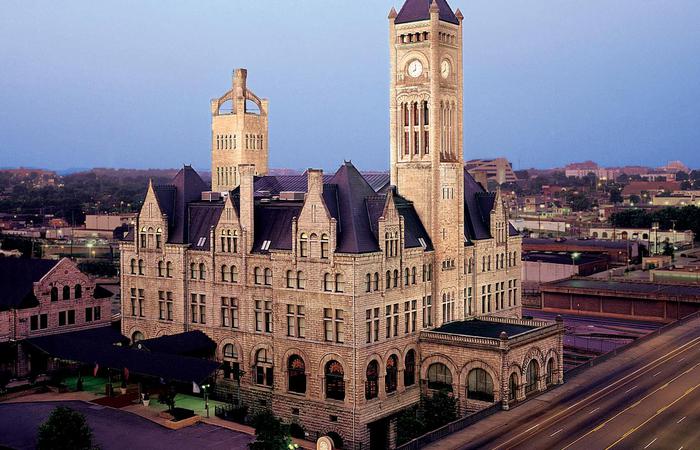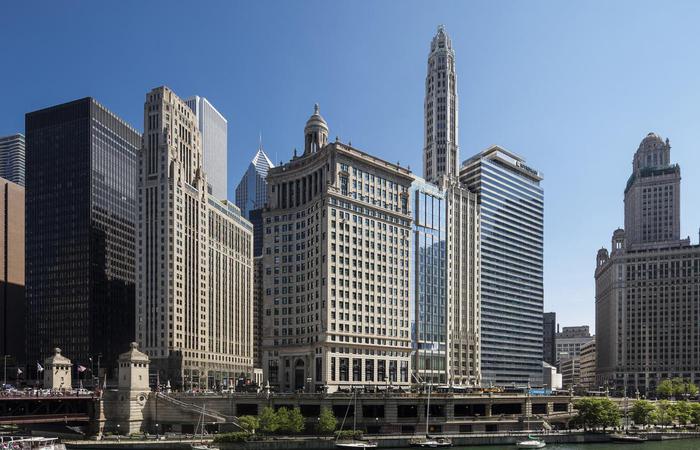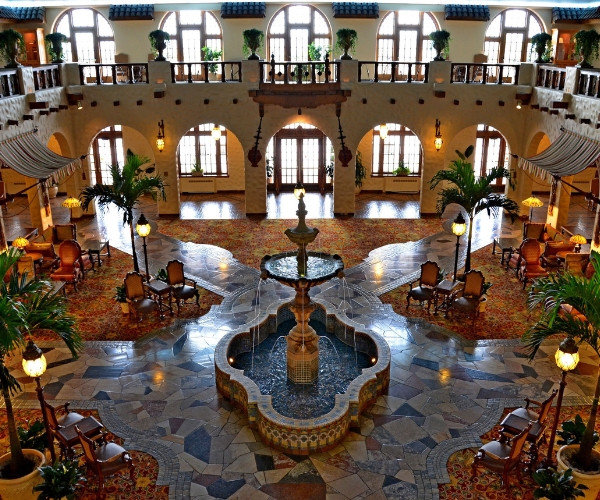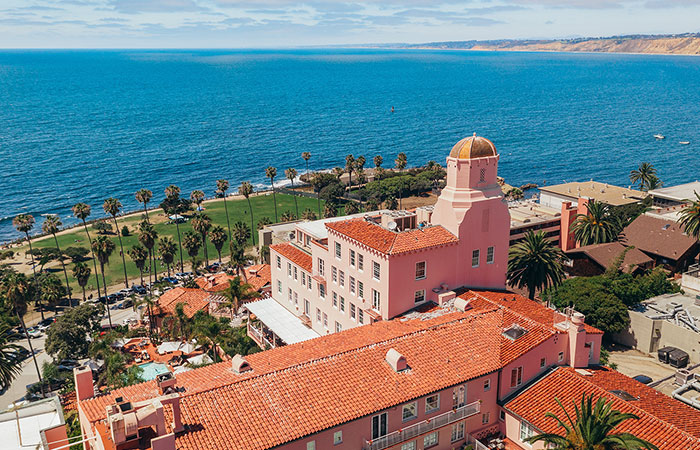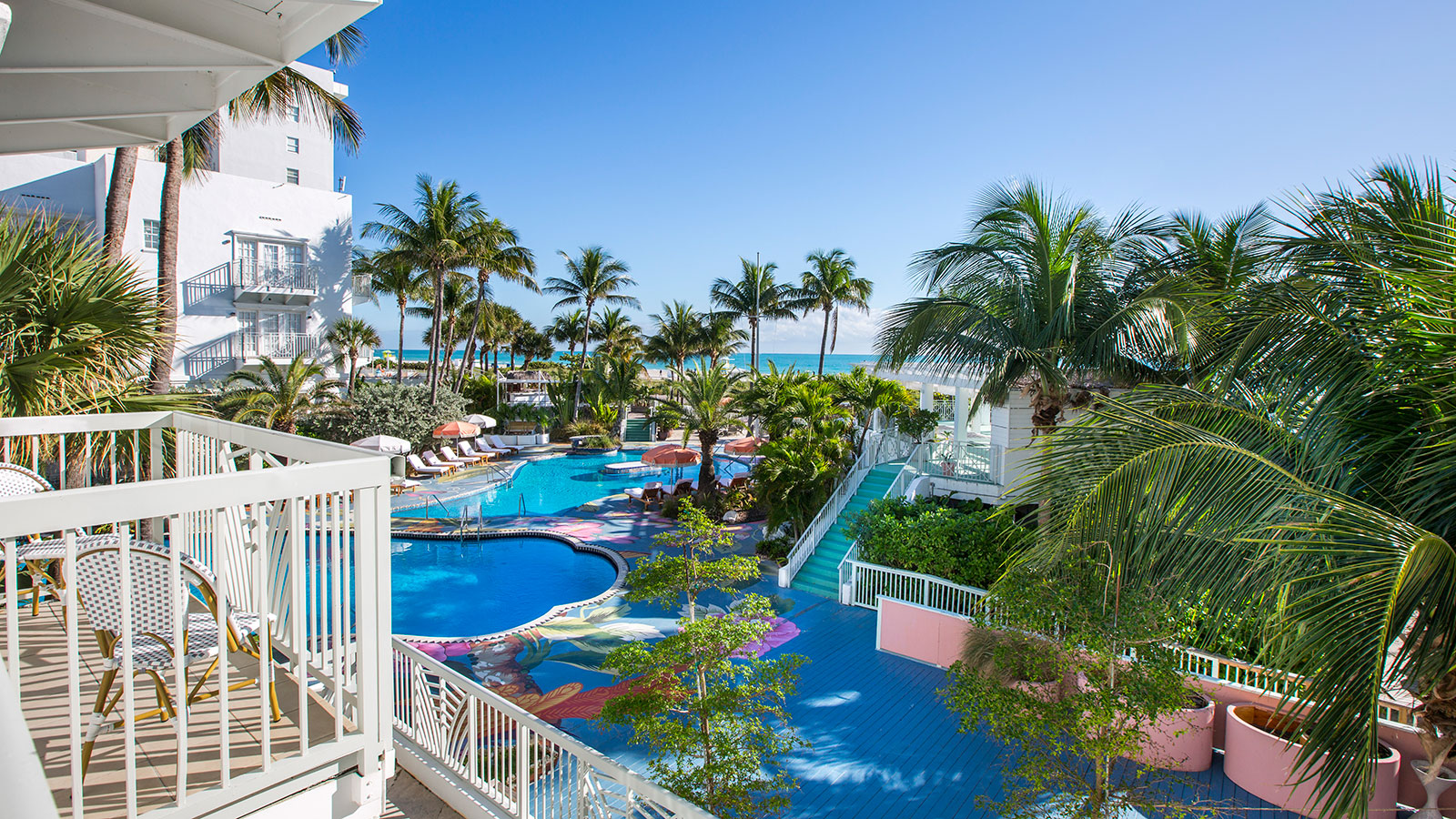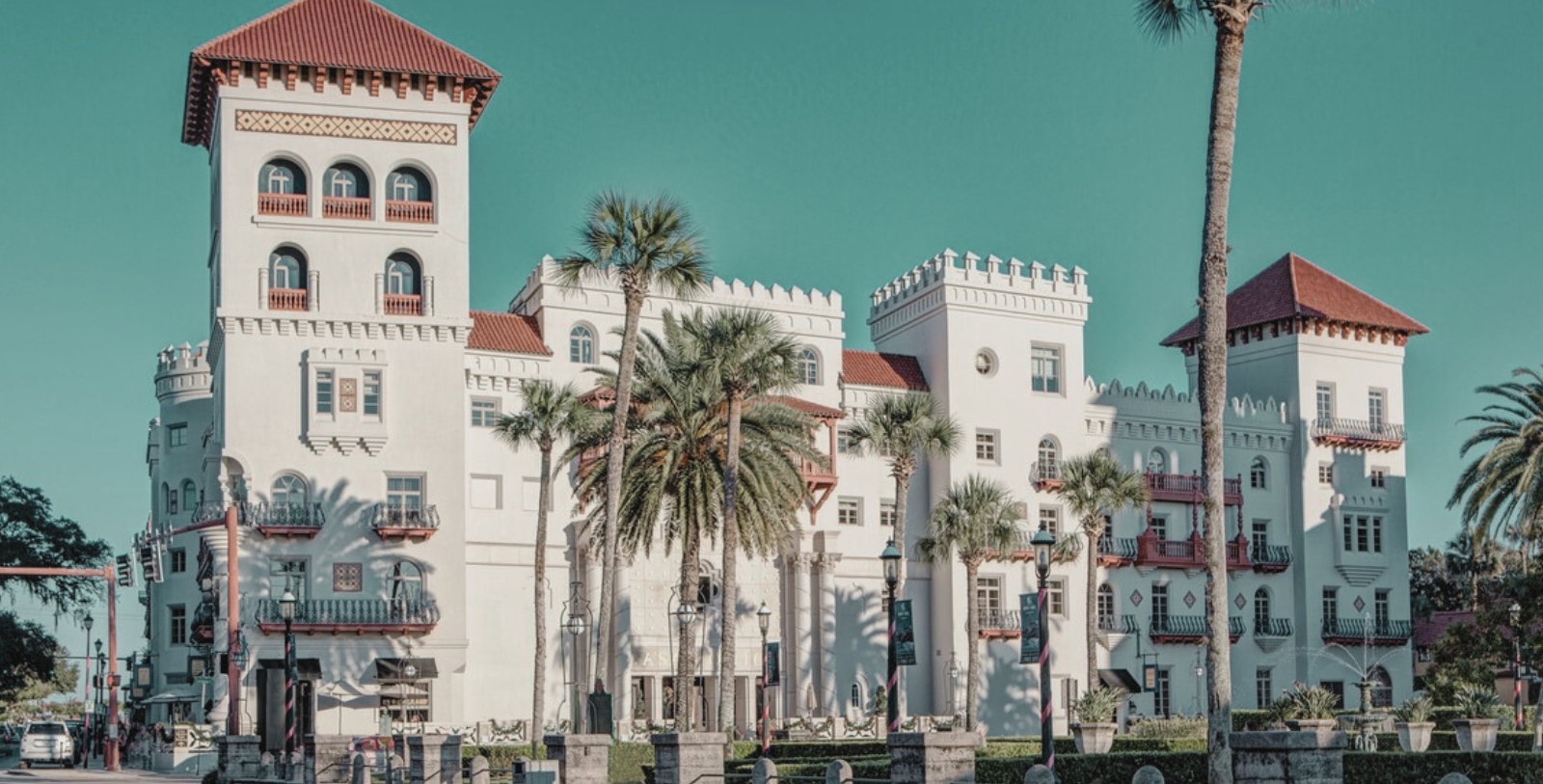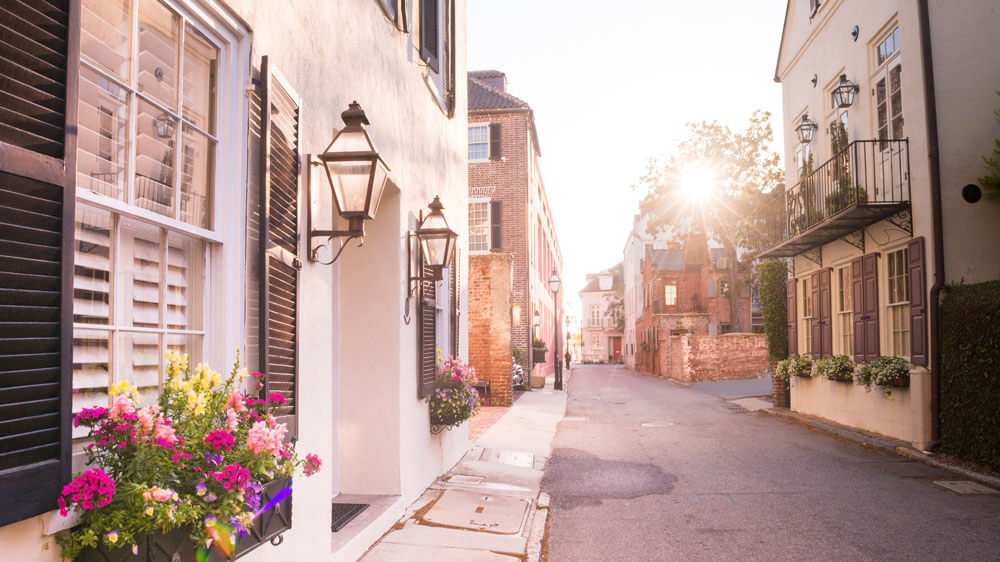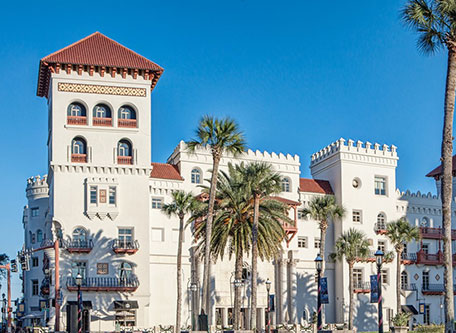Receive for Free - Discover & Explore eNewsletter monthly with advance notice of special offers, packages, and insider savings from 10% - 30% off Best Available Rates at selected hotels.
history mystery
Which historic hotel’s grand architecture and gold-leaf ceiling are beautiful examples of Moorish Revival-style design?
Casa Monica Resort & Spa St. Augustine, Florida (1888)
Nestled in the heart of St. Augustine, Florida, Casa Monica Resort & Spa stands as a testament to the city's rich history and architectural grandeur.
Built in 1888 by Franklin W. Smith, a visionary with a passion for Moorish Revival-style architecture, the hotel has witnessed a myriad of events and is a landmark in St. Augustine. Franklin W. Smith, a Bostonian social activist, embarked on an ambitious project to create a luxurious, distinctive hotel that would attract the elite of the Gilded Age.
Casa Monica Hotel, with its distinctive Moorish Revival-style architecture, opened its doors on New Year's Day in 1888. The popularity of this type of architecture was fueled by a fascination with, and romanticized view of the western Islamic world that spread throughout Europe and America in the 19th century. This architectural style is characterized by horseshoe arches, intricate tile work, domes and minarets, elaborate stucco and plaster decorations, central courtyards with fountains and gardens, and detailed mosaics and carvings. Through Smith’s influence and passion derived from his travels to Spain, this style of architecture can be found throughout St. Augustine, complimenting the city’s Spanish Colonial heritage and evoking a sense of grandeur and mystery.
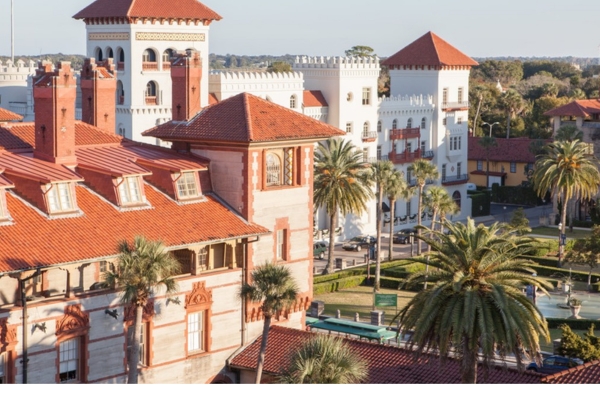
Despite Smith’s success in building a magnificent and beautiful hotel, financial difficulties forced him to sell the hotel to Henry Flagler just four months after opening. Flagler, a railroad magnate and cofounder of Standard Oil, was a visionary developer of Florida’s hotel, tourism and transportation industries. Flagler once remarked that he “saw wilderness and out of it created an empire” with his development of several magnificent hotels in the region.
Under Flagler's stewardship, the hotel was renamed the Cordova Hotel and flourished as a premier destination. The hotel hosted numerous social events, including parties, balls, and charity events. It was a central community hub and played a significant role in the social and cultural life of St. Augustine. Flagler's influence extended beyond the hotel, as he played a pivotal role in the development of St. Augustine as a winter haven. Despite its success, the hotel faced challenges during the Great Depression and eventually closed its doors in 1932.

Casa Monica Resort & Spa remained vacant until 1968, when it was repurposed as the St. Johns County Courthouse. The building was purchased and saved by Richard Kessler in 1997. Kessler immediately began remodeling the historic structure, transforming it back into a magnificent resort. Kessler hired architect Howard W. Davis to spearhead the redesign, which focused on saving the building’s unique architectural elements.
In 2000, local artist Tina Guarano Davis was commissioned to hand-stencil the detailing found throughout the hotel and continues to periodically restore her hand-painted designs to ensure that these details remain exceptional throughout the resort. Hand-stenciling is featured on the ceiling beams and arches in the lobby, as well as in the Cordova restaurant, Flagler Ballroom, and the guestroom corridors. Cordova restaurant boasts hand-painted, gold-leaf ceilings, designed to delicately reflect the light of the handmade Moroccan chandeliers. Guests can discover the history and architectural design elements of this resort, including the ornate artistry of the gold-leaf ceiling, on a complimentary one-hour tour, where the hotel’s expert guides reveal the stories of the beautiful spaces and neighboring landmarks.

Casa Monica Resort & Spa is more than just a luxury resort; it is a living piece of St. Augustine's history. From its creation by Franklin W. Smith, through its transformation under Henry Flagler, to its meticulous restoration by Richard Kessler, the hotel has continually evolved while preserving its architectural splendor and cultural significance.
This has been a Historic Hotels History Mystery.
For more fun facts, trivia, and historic highlights, check out our History Mystery pages for Historic Hotels of America and Historic Hotels Worldwide.


